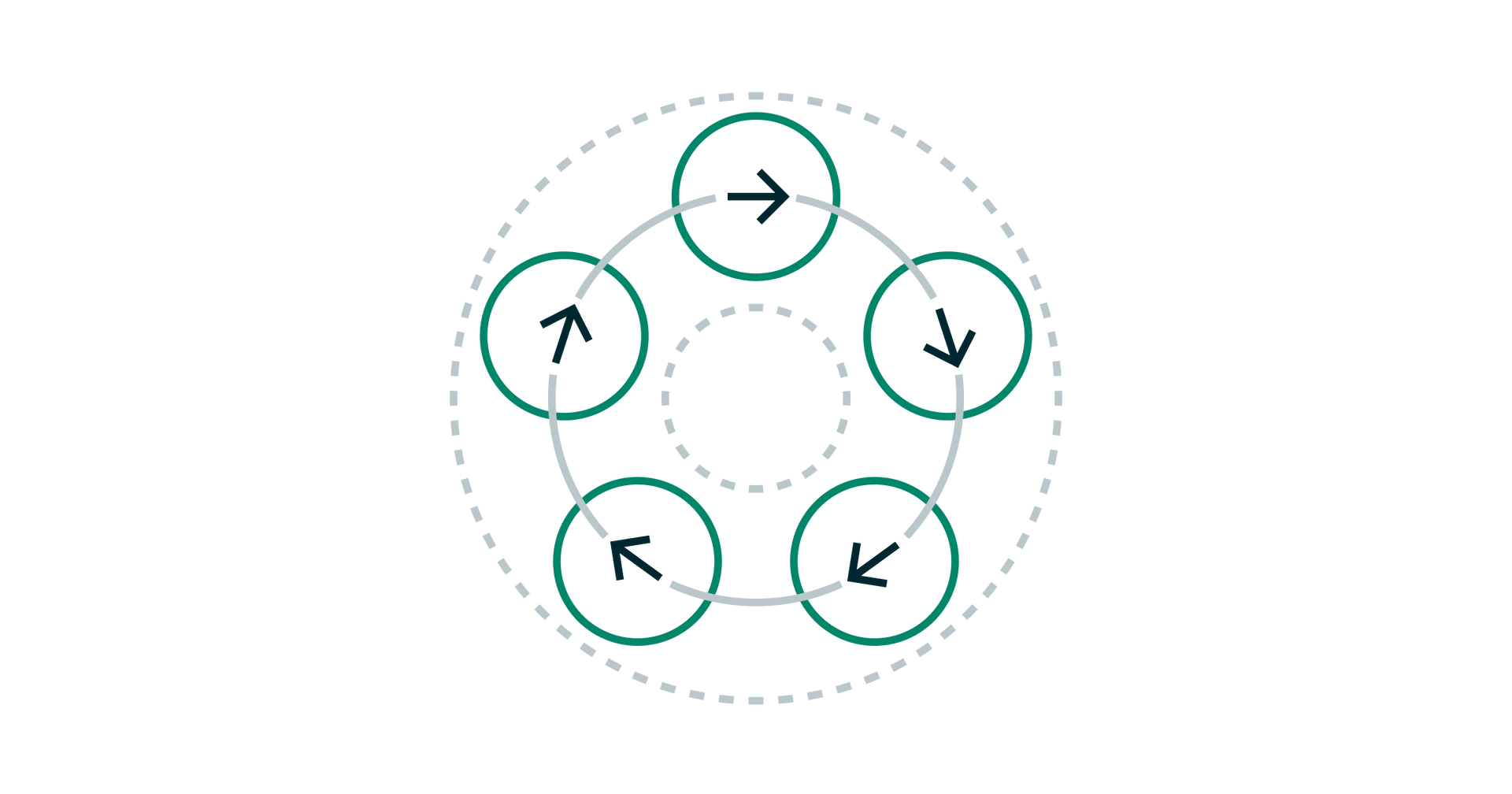Quantive is now part of WorkBoard. Get to know WorkBoard:
What is a business continuity strategy?
A business continuity strategy helps put a plan in place for how company leaders and internal teams respond to things like natural disasters, cyberattacks, or supply chain interruptions. It's what helps businesses stay prepared for the unexpected. It’s an important element to have prepared to safeguard a company’s revenue, reputation, and critical assets.
What goes into creating an effective business continuity plan within your strategic management efforts? We’ll explore each element in detail in this article.
What is the business continuity strategy process?
First, let’s establish the meaning of business continuity in an organization. Business continuity is a company’s ability to resume or maintain operations after a disruption.
The business continuity strategy process focuses on minimizing downtime and maintaining key functions despite unexpected events. This strategy is critical for risk reduction and ensuring a business's long-term success.
It can’t be overstated how important business continuity management (BCM) is for companies. Disruptions can cause financial loss, reputational damage, and operational paralysis. A comprehensive strategy enables businesses to respond effectively, reducing the impact of these events.
Key elements of this process include risk assessments, recovery procedures, and establishing crisis communication protocols with business partners and key stakeholders. Let’s look deeper into how business continuity strategies are developed and executed.
What are the five steps of a business continuity plan?
When you’re wondering how to write a solid business continuity plan, it can be broken down into five key steps. They are:
- Risk assessment: Start by identifying potential risks in your organization during the business continuity planning process— such as cyberattacks, supply chain disruptions, natural disasters, or supply chain interruptions—and evaluate their likelihood and potential impact on the business. Identify weaknesses in how your organization would currently respond should such a threat occur.
- Business impact analysis (BIA): Examine how disruptions could affect key operations and determine the critical processes that need protection. This includes financial, operational, and reputational impacts.
- Strategy development: Based on the BIA, you’ll develop strategies to address and mitigate the identified risks. This may involve implementing backup systems or securing alternative suppliers to preserve critical business functions.
- Plan development: The business continuity plan is written, detailing the specific actions the company will take before, during, and after a disruption to maintain critical business operations and meet a recovery point objective.
- Training and testing: Regular training ensures that employees are familiar with the continuity plan, and testing validates its effectiveness and helps identify areas for improvement.
Your business continuity plan and disaster recovery plan will likely evolve over time, so it’s essential to continue adjusting as needed to align with current organizational needs, external threats, and evolving business processes, in order to prevent and mitigate business disruption.
What is an example of a business continuity strategy?
IT disaster recovery plans are a common business continuity plan example. These plans outline the company's procedures to restore IT systems after a disruption, such as a cyberattack or a data center outage.
After the disruption occurs, the company and IT team will have a clear process in place to handle what they need to do, such as:
- Assessing potential damage to business systems and data
- Going through the steps to safely get computer systems back online
- Coming up with well-worded messaging to address customers about the issue while operations are on pause
- Managing negative PR and social media that could occur
- Testing systems to ensure they’re safe and prevent the issue from occurring again
It’s also important for everyone to know their role in the process. For instance, IT team members would be focused on solving technical issues, while the PR and Social team would create a message to address customer questions and concerns.
What are the 4 P's of business continuity?
The 4 P's of good business continuity plans provide a framework to address the key aspects of continuity planning. You may even want to include these elements in your business continuity policy to understand how your plans affect each business area. The 4 P’s are:
- People: This includes the roles and responsibilities of employees in a crisis, as well as plans for employee safety and well-being.
- Processes: Continuity of essential operations, such as production and customer service, is vital. Detailed process recovery plans ensure that critical functions are maintained.
- Premises: Organizations must protect their physical locations and assets, including plans for evacuation or relocation if necessary.
- Providers: External vendors, suppliers, and partners are crucial to a company's operations. The continuity plan should include strategies to manage dependencies on these providers.
Who is responsible for the business continuity plan?
Overall, the organization's members usually play key roles in the business continuity plan and overall risk assessment and risk management.
Company leaders and senior managers need to understand the plan thoroughly, how it’s implemented, and how they’ll take charge in times of crisis. They’re also generally in charge of testing and updating the plan as business needs change over time.
Some organizations might also have a business continuity manager. Alongside other management, this person would generally oversee the creation, testing, and implementation of the plan throughout the organization and ensure everyone is on the same page.
Additionally, each department (HR, IT, finance, operations, etc.) will have its own responsibilities within the plan. For instance, IT might be in charge of resolving technical issues after a natural disaster. At the same time, your finance department manages costs and calculates the monetary impact it’ll have on the business.
Quantive StrategyAI can help you plan your business continuity strategy
Quantive StrategyAI is a platform for helping businesses design and implement business continuity strategies. By providing real-time data and AI-powered insights, Quantive ensures that organizations can continuously monitor risks and create a robust business continuity strategy that adapts to disruptions in real time and simplifes crisis management.
Ready to safeguard your business from disruptions and create effective recovery strategies? Contact us today to learn more about how Quantive StrategyAI can enhance your business continuity strategy.





